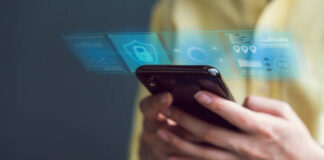The size of an Android app can vary depending on the app or the aim of the adaptation. App developers are more focused on perfecting their apps in mobile application development when it comes to the crucial phases of the app development lifecycle.
A lack of storage space causes a device’s operation to lag or behave strangely. Because of this, it is essential and unavoidable to have portable, tiny apps that are engaging, responsive, and adaptable to the majority of mobile devices and require little storage space. These are some of the most effective methods for reducing the size of Android apps while they are being developed.
Therefore, developers must comprehend consumer preferences in order to create apps that meet user needs while taking up the least amount of space.
Now, let’s take a closer look at how to reduce the size of an Android app or APK while developing an app:
1. Optimize App Images
Image optimization or size reduction is feasible without degrading image clarity or resolution. Users like apps that are highly dynamic and fast, thus optimizing photos is a terrific approach to minimize app size, improve app speed, and increase responsiveness.
According to Google, apps larger than 150MB often have lower download and installation rates than apps smaller than this average. File formats in high definition and ultra-high definition can be compressed without losing quality. Online resources include a variety of tools for professionally modifying image file sizes.
2. Reuse Your Code
Avoid duplicating code as much as you can by reusing it. You will be greatly assisted in solving this issue by object-oriented programming, which will also assist in maintaining the size of your APK. Repetitive code will raise the size of that specific file, which will increase the size of the APK.
3. Using Proguard
Proguard is crucial in determining how big the Android APK should be. The following list includes Proguard’s primary purposes:
It makes it challenging to reverse-engineer the application. By deleting the unnecessary classes and methods, the application’s size can be decreased. Proguard in the Android app can be located in the build.gradle file under Gradle Scripts.
4. Using R8 To Reduce The Size of APK
R8 functions similarly to proguard. By reducing the amount of code, we may automatically reduce the size of an APK through a technique called R8 shrinking. R8 uses proguard rules to reduce code size and improve output size.
5. Optimizing The Libraries That Reduces App Size
It is common knowledge that enormous libraries take up a lot of room. Therefore, it is strongly advised to eliminate certain components if they are not required and doing so is allowed by the licence. Proguard can help you with this Android app size reduction procedure, but it is not well-suited to get rid of significant internal dependencies.
6. Choose Android GO
Google introduced Android Go to test the interest of a brand-new, expanding audience. It was released with numerous performance and storage enhancements on the front of the size of Android apps and is designed to deliver a seamless and scalable experience on cost-effective devices, including those that have less than 1GB of RAM.
Although Google tends to identify apps that are dedicated to the Android Go app ecosystem, Android Go users may still access the entire Google Play Store. Surprisingly, consumers can find apps on their device that are less than 40 MB in size for Android.
7. Using Vector Images
Since they rely on mathematical calculations rather than saving pixels, they are crisp and take up little space. They cannot, however, be used for photography.
8. Removing The Dead Code
The size of the APK file directly affects how quickly your software loads, how much memory it uses, and how much power it uses. Any unneeded or improper code that was preserved for the purpose of keeping it would therefore just add to the clutter. For your app to be active and invigorated constantly throughout the day, dead code removal or code elimination is necessary.
9. Reusing the Resources
Reusing is actually easier and more beneficial than removing. It’s a fantastic method to use your resources in different ways. It provides you with a fluid scrolling experience. You could use it to lessen the overall size of your Android APK. Resources that are merely a rotational equivalent of another resource can be removed.
Final Thoughts
Users frequently download numerous apps to satisfy their needs because mobile storage capacity is expanding unpredictably. But when app sizes grow concurrently, users struggle to keep all of their apps organized on their devices. As a result, they frequently retain program with several features but low memory requirements.
Every step on how to reduce Android app size to achieve the same results has been addressed. Your developing team’s ability to handle it is now up to them, or you may engage an Android app development company to perform it for you in a knowledgeable and proficient manner.








